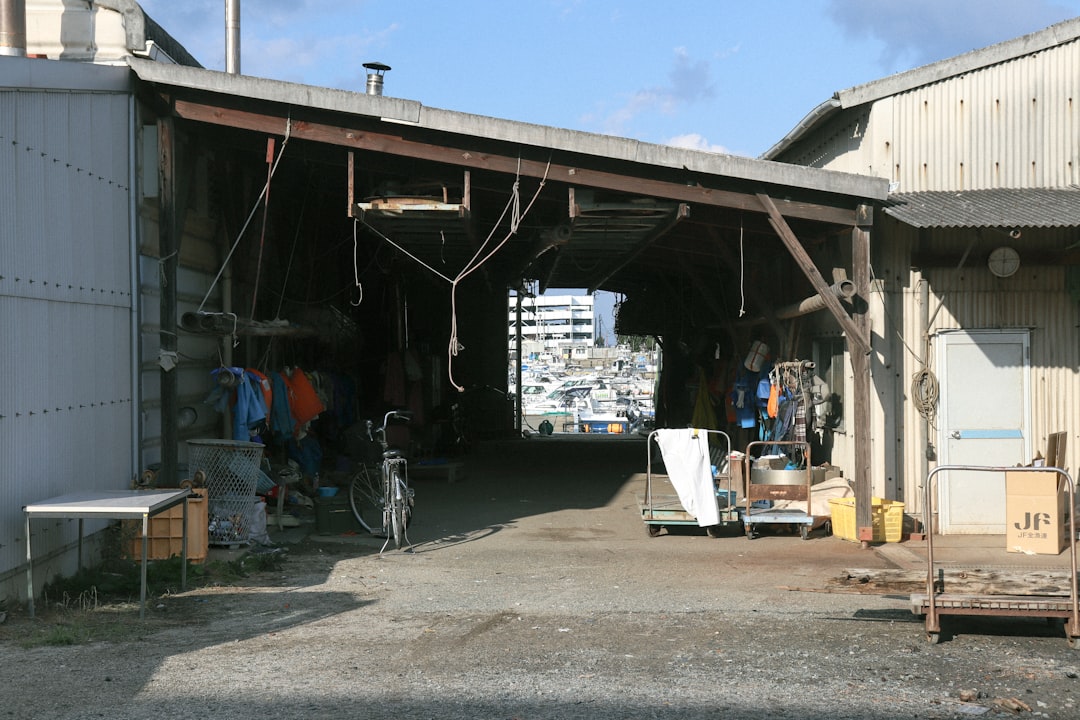

Engage prospects with a scan and streamline customer engagement with FREE QR code marketing tools by Sona – no strings attached!
Create a Free QR CodeFree consultation

No commitment

Engage prospects with a scan and streamline customer engagement with FREE QR code marketing tools by Sona – no strings attached!
Create a Free QR CodeFree consultation

No commitment
The carport manufacturers industry is experiencing a digital transformation as customers increasingly expect seamless experiences from research to installation. Traditionally, carport suppliers and custom carport builders have relied on print brochures, in-person sales, and word-of-mouth to reach new clients and manage post-sale engagement. However, these traditional approaches can create friction in lead capture, product education, and after-sales support, especially as the buyer journey spans both physical and digital touchpoints.
Many in the industry face the ongoing challenge of losing high-value prospects simply because buyers browse or research solutions but never fill out a form or call, causing missed opportunities that are never tracked in the CRM. Incomplete or outdated account information further complicates efforts to offer timely, relevant follow-ups and prevent churn. These gaps add up to real revenue leakage: unscanned signage, abandoned brochures, and outdated manuals fail to convert curiosity into conversations.
As demand for metal carport manufacturers, carport installation guides, and modular design options grows, QR codes provide a strategic solution to bridge the gap between offline touchpoints and online information. With a single scan, customers can access detailed product specs, virtual configurators, installation videos, financing options, or warranty registration forms, no app required. When powered by dynamic links and integrated analytics, QR codes transform static assets into data-rich interactions that accelerate sales, support, and loyalty.

QR codes are quickly becoming the bridge between traditional marketing like printed brochures or showroom signage and actionable digital experiences. A common frustration for carport manufacturers is the gap between when a visitor shows interest in a product on-site or at an event and when that interest is logged and acted upon. Without a robust capture mechanism, many high-intent prospects remain anonymous, slipping through the cracks and evaporating into unqualified web traffic. Modern strategies now enable carport businesses to embed QR codes at crucial touchpoints, such as demo units or installation kits, giving buyers direct access to design software, material comparison charts, and even financing applications right when their curiosity peaks.
Replacing analog processes with QR-enabled journeys also reduces friction for staff and customers alike. Instead of handwritten quote pads, prospects can scan a code on a showroom placard to launch a pre-filled estimate form. Rather than distributing heavy spec binders at trade shows, teams can offer a scannable mini card that links to live engineering drawings, snow and wind ratings, and 3D visualizers. For installers, QR-stickered beams or packaging can point to video walkthroughs and live chat support, making on-site troubleshooting faster and less dependent on hold times.
To get started:
For example, placing QR codes on demo units in a retail lot lets buyers instantly compare material durability or view case studies of successful installations. This not only enhances customer education, but also makes it possible to identify and follow up with prospects who show real intent but never fill out a traditional form. Similarly, a QR on a quote can bring customers back to a saved design that sales can review during a scheduled call, turning an anonymous browse into a qualified appointment.

Carport manufacturers struggle to convert real-world interactions such as billboards, flyers, and trade shows into actionable digital leads, in part because the majority of visitors either do not convert on first touch or remain completely anonymous. Without streamlined visibility into these touchpoints, businesses miss high-value prospects and fail to attribute offline engagements to pipeline outcomes, as outlined in Sona’s offline attribution.
QR codes solve this by making every physical asset interactive and measurable: prospects can book site visits, access spec sheets, or request quotes with a single scan, while the data from those scans flows directly into lead management workflows. Dynamic QR codes, in particular, address common pain points like outdated promotions or stale offers because they can be updated post-print, extending campaign value and ensuring that marketing efforts remain timely and relevant. If you change pricing tiers, expand color options, or update structural certifications, the destination can be refreshed without reprinting anything.
By leveraging scan analytics such as which signage locations or event materials drive the most engagement, manufacturers gain the account-level insights necessary to prioritize ad spend. Teams can then focus follow-ups on companies showing real purchase intent rather than wasting resources on cold, unresponsive audiences. This shift from guesswork to data-backed decisions is especially critical for regional campaigns, dealer networks, and large-format signage where costs are high and attribution is difficult without a scannable bridge.

Diverse buyer needs and fragmented touchpoints often cause data silos or incomplete CRM records, limiting effective personalization and follow-up. QR code formats can be adapted to supplement these weak spots, providing new channels for data capture and engagement enrichment. Choosing the right format for the right moment ensures that a scan leads to the most relevant next step, whether that is education, conversion, or support.
Here are formats that typically drive results for carport manufacturers:
Dynamic QR codes are especially valuable when your business needs to pivot offers or highlight seasonal availability on printed assets. They quickly solve the headache of expensive, static collateral becoming outdated, while maintaining continuity in tracking and attribution. With Sona QR, you can create and manage these formats in one place, update destinations instantly, and capture scan-level analytics that sync back to your CRM.

Many carport suppliers encounter the challenge of fragmented engagement, as prospects may interact at trade shows, through packaging, at dealer lots, or via direct mail. Without a unified system to capture and nurture those accounts, post-event and post-purchase interest often disappears. Missed upsell and cross-sell opportunities are common when teams do not track maintenance content engagement, accessory interest, or seasonal upgrade prompts.
Growth opportunities exist at every real-world touchpoint. The key is to connect physical surfaces to the specific digital action a buyer is most likely to take at that moment. When the destination and call to action are calibrated to the environment, scan rates rise and conversion journeys accelerate.
By orchestrating these touchpoints, marketers and sales teams surface hidden intent signals and compound small gains across the journey. Over time, this reduces missed opportunity costs and strengthens the connection between spend and pipeline impact. To make mail measurable, incorporate direct mail codes tied to localized offers and attribution.

Each stage of the customer journey presents pain points, for example, lost demo interest when visitors leave without submitting a form or post-sale disengagement when support needs are unclear. Forward-thinking companies address these challenges by embedding QR codes throughout the process, then feeding those actions into CRM-driven workflows for timely, relevant follow-ups.
Successful deployments share two traits. First, the scan destination is tailored to where and why someone scans. Second, the data and context are captured so you can retarget or route efficiently. Below are practical examples aligned to core business goals.
When combined with scan analytics, these use cases help preempt churn and create cross-sell moments. For instance, a customer who scans a maintenance guide three months after install can be offered guttering accessories or a seasonal checkup at a preferred rate.
Many manufacturers struggle to distinguish true buying signals from general web traffic, which limits the relevance of their retargeting. With QR-driven campaigns, each scan can be linked to a specific buyer journey phase. A show floor scan might indicate early research, a brochure scan at a dealer lot implies consideration, while a warranty registration scan confirms post-purchase status. Segmenting audiences by scan context enables more effective messaging and higher conversion, especially with Sona’s intent-driven retargeting. This approach also pairs well with AI lead generation in the carport category.
To make this work at scale, use unique QR codes per asset, placement, and intent. A family reviewing a snow load map might be a better candidate for an engineering consultation than someone who scanned a lifestyle photo. Similarly, a contractor scanning installation videos is a strong candidate for trade pricing and bulk discounts.
For carport manufacturers, useful distinctions include homeowners vs. contractors, new builds vs. add-ons, and residential vs. agricultural or commercial use. Tailor content and offers accordingly to lift engagement and shorten the sales cycle.
The challenge for most carport manufacturers is not a lack of marketing activity, but the inability to unify data and attribution across offline and online campaigns. QR codes solve this by vertically integrating brochures, mailers, in-store signage, dealer displays, and product literature into a single, data-rich entry point. This creates a connected funnel where every scan can be measured, nurtured, and attributed to revenue.
When QR codes are centrally managed, teams can run controlled experiments on calls to action, creative treatments, and destinations. The same promotion can be deployed across signs, flyers, and quotes with variants tailored to context. Scan and conversion data then reveal which channel and message combination drives the highest qualified response, allowing for smarter budget allocation.
In this vertical, brochures, direct mail, dealer signage, and job site yard signs are especially common and effective. With a platform like Sona QR, you can manage all codes, monitor performance in real time, and sync scan activity with your CRM and ad platforms for coordinated next steps.
A consistent process ensures your QR code investments translate into measurable outcomes. The following checklist provides a repeatable playbook you can use for each campaign or product line. Whether your goal is to capture more quotes, streamline installation support, or drive referrals, these steps align your assets, data, and teams for impact.
As you move through this sequence, document what you change and what you learn. Iteration is where QR programs compound gains: refining placements, improving CTAs, and strengthening integrations lead to higher scan and conversion rates over time.
Create a simple dashboard to visualize the full flow from scan to revenue. Over a few cycles, you will build a library of proven placements, messages, and destinations that consistently outperform.
In a market where a single missed lead can mean losing out on large, high-margin sales, robust attribution is essential. Too often, manufacturers struggle with scattered, incomplete data, making it hard to tie marketing investments to pipeline movement or revenue. Knowing that someone scanned a code is helpful, but you need to understand which scans lead to form fills, calendar bookings, and signed contracts to make confident decisions.
Advanced tracking fills these gaps by capturing scan-level context and connecting it to identity, engagement, and outcomes. When scan activity syncs to your CRM, your team can prioritize outreach by intent and timing, then measure how QR-enabled touches contribute to deals at every stage. This is especially valuable for dealer networks and multi-location campaigns where visibility has historically been poor.
With Sona QR and Sona.com, you can go beyond basic scan counts. Sona QR captures detailed scan data, supports dynamic destinations, and syncs with systems like HubSpot and Salesforce. Sona.com layers identity resolution and journey analytics to attribute revenue and unify touchpoints across buying stages. The result is end-to-end visibility from a yard sign scan to a scheduled site visit to a closed sale.
Maximizing QR campaign ROI means continually closing the gaps that naturally emerge in a fragmented buyer journey. The most effective teams standardize a few best practices, then adapt them to each placement. Over time, these habits compound into measurable lifts in scan rates, lead quality, and conversion.
Prioritize tactics that mirror your most common media and buyer moments. For carport manufacturers, that typically includes dealer signage, brochures, direct mail, quotes, invoices, installation materials, and job site yard signs. Equip staff and partners to promote scans proactively and to explain the benefit clearly.
Creative deployments can drive outsized results. For instance, place a QR code on the inside of the installed frame that links to a maintenance checklist and referral program. Or add a QR code to final invoices that opens a quick satisfaction survey and a review link, consolidating feedback collection and reputation management.
QR codes have become an essential tool for turning the hidden corners of the carport buyer journey, where leads are often lost, engagement signals missed, and attribution muddied, into transparent, connected, and actionable data flows. Strategically placing QR codes at every key moment empowers manufacturers to capture genuine intent, automate nurturing and support steps, and close the loop from initial interest to installed solution. The outcome is a measurable, customer-centric experience that reduces missed opportunities and propels growth in a competitive market.
Carport manufacturers that embrace QR-driven engagement position themselves at the forefront of a rapidly evolving industry. With the ability to seamlessly link physical assets to digital journeys, every scan becomes an opportunity to educate prospects, streamline support, and accelerate the sales process. Whether your priority is capturing more qualified quotes, enriching CRM data, or reinforcing post-sale relationships, a data-driven QR strategy turns each surface into a strategic growth lever. With Sona QR for creation, tracking, and CRM sync, and Sona.com for attribution, you can connect scans to revenue and scale what works. Start creating QR codes for free.
QR codes have revolutionized the carport manufacturing industry by transforming traditional customer interactions into dynamic, measurable opportunities for growth. From streamlining access to product information and installation guides to enabling seamless service scheduling, QR codes empower manufacturers to attract new customers, enhance user experiences, and gather valuable insights that drive smarter business decisions. Imagine instantly knowing which brochures or onsite displays lead to inquiries and sales—and being able to optimize your approach in real time.
With Sona QR, carport manufacturers can create dynamic, trackable QR codes in seconds, update campaigns instantly without costly reprints, and link every scan directly to revenue-generating actions. This means no missed leads, improved customer engagement, and a clear path to maximizing ROI. Start for free with Sona QR today and turn every scan into a step toward expanding your customer base and boosting your bottom line.
The article does not list specific top carport manufacturers but highlights the industry trend toward digital transformation and the use of QR codes to enhance customer engagement.
Choose a manufacturer that offers seamless digital and physical customer experiences, uses modern tools like QR codes for easy access to product specs and support, and integrates CRM systems for timely follow-ups.
The article mentions a growing demand for metal carport manufacturers but does not detail all materials used.
The article does not provide specific cost information but suggests that QR codes can link to installation cost calculators to help estimate prices.
Custom-built carports benefit from modular design options, easy access to detailed specs, installation support, financing options, and warranty registration facilitated through digital tools like QR codes.
QR codes bridge offline and online touchpoints by providing instant access to product information, virtual configurators, installation videos, financing forms, and support, which accelerates sales and improves customer satisfaction.
Useful QR code formats include web links to specs and configurators, vCards to save contacts, SMS or email for quick communication, Wi-Fi access at showrooms, and app downloads for customer portals.
QR codes are effective on trade show displays, dealer locations, product packaging, installation manuals, flyers, direct mail, billboards, yard signs, quotes, invoices, and showroom placards.
They use platforms like Sona QR to monitor scans by time, location, device, and campaign, integrate scan data with CRMs, apply multi-touch attribution, and analyze conversion metrics to optimize marketing spend.
Key steps include defining the use case, selecting static or dynamic QR codes, designing and testing codes with branding and accessibility in mind, deploying across high-impact channels, and tracking and optimizing performance.
Dynamic QR codes allow updating destinations post-print, enable tracking and retargeting, capture analytics for optimization, and extend the value of printed materials by keeping offers and information current.
By creating unique QR codes for different buyer journey stages, tagging scan data by intent and location, and syncing this data with CRM and ad platforms, manufacturers can segment audiences and deliver personalized messaging.
Challenges include losing high-value prospects due to anonymous browsing, fragmented engagement across offline and online channels, incomplete CRM data, and difficulty attributing marketing efforts to revenue.
Use Sona QR's trackable codes to improve customer acquisition and engagement today.
Create Your FREE Trackable QR Code in SecondsJoin results-focused teams combining Sona Platform automation with advanced Google Ads strategies to scale lead generation

Connect your existing CRM

Free Account Enrichment

No setup fees
No commitment required

Free consultation

Get a custom Google Ads roadmap for your business






Launch campaigns that generate qualified leads in 30 days or less.
